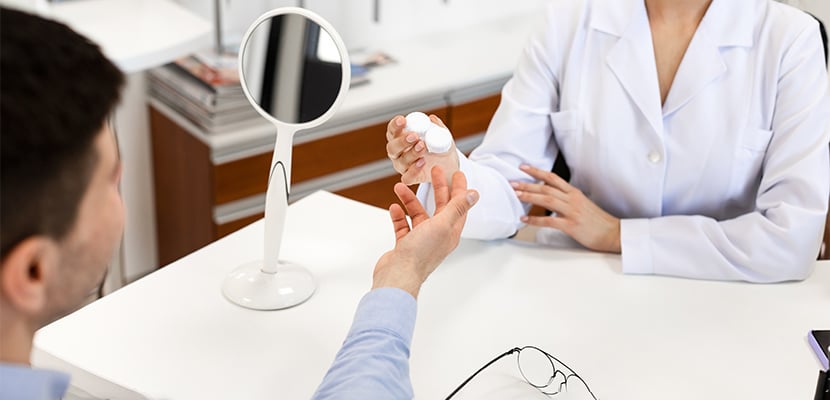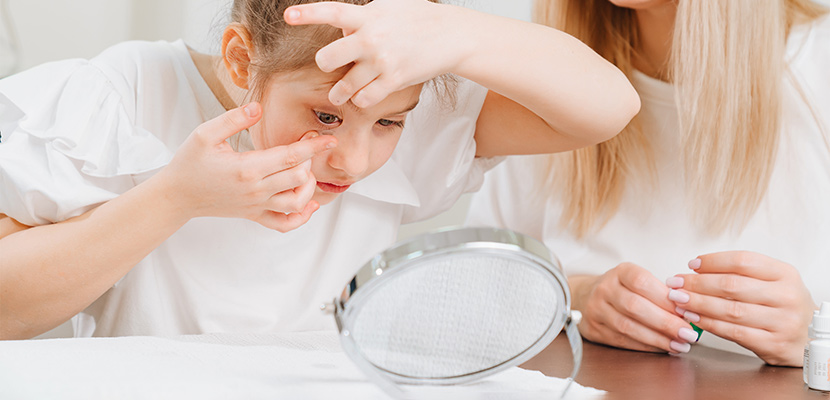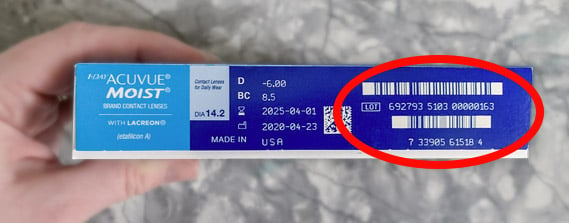How to Get Used to Contacts
Adjusting to new glasses is one thing, but getting used to contact lenses can be an even bigger struggle. Once you’ve grown accustomed to inserting and removing your contacts, wearing them can also take an adjustment period.

Possible Problems With New Contacts
Common Symptoms While Adjusting to Contacts
It’s normal for the eyes and brain to be confused when your vision is being changed. Whether it’s your first-time wearing contacts, you just received a new prescription, or your contacts aren’t the right fit for you, the following symptoms can occur:
- Blurry or cloudy vision
- Dry or watery eyes
- Eye strain
- Headaches
- Dizziness
- Nausea
Tips for Adjusting to New Contacts
- Put on Contacts First Thing:Your eyes won’t have time to get used to your vision without contacts if you put your lenses in first thing in the morning.
- Increase Wear Time:The more you wear your contact lenses, the faster you will get used to them. However, this doesn’t mean wearing them for longer than instructed. Carefully follow your contact lenses’ replacement schedule.
- Proper Care:If contacts aren’t being handled correctly, it could affect their function and comfortability. Lenses with scratches or debris will result in blurry or cloudy vision. Always washing your hands before handling contacts, cleaning contacts with the correct cleaners, and storing them in a contact lens case with the correct solution, are just some essentials to properly caring for contacts.

How Long Does it Take to Get Used to Contacts?
Adjusting to contacts can take anywhere from a few days to a few weeks. If the blurry vision persists longer than two weeks, contact your eye doctor.
Does It Take Longer to Get Used to Rigid Gas Permeable Contact Lenses Than Soft Contact Lenses?
Yes, rigid gas permeable contacts, also referred to as hard contacts, can typically take up to two weeks to get used to while soft contacts take a few days. Most people find it hard to adapt to the rigid plastic material of hard contacts. Because of this, the silicone hydrogel material of soft contacts has become the more popular option.
Should New Contacts Make My Vision Blurry at First?
Blurred vision from contacts can be quite common. Although vision changes and the wrong prescription may be your first thought, that is not always the case. There is an adjustment period with wearing contacts that can take up to two weeks. Read our Contact Lens Guide on Why Is My Vision Blurry with Contacts for more information.
How Do I Know if My Contact Lens Prescription is Wrong?
If the problem hasn’t resolved itself and you’re still suffering from the symptoms above after a week or two, you could need a different contact lens prescription and should contact your eye doctor.
Once you get used to contacts, they should become comfortable enough where you don’t even realize you’re wearing them! If you still have questions or concerns, contact our Customer Service Team.

